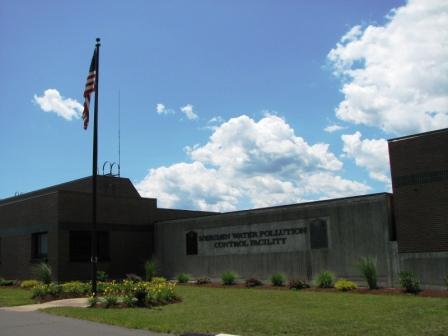Water Pollution Control Division
The Water Pollution Control Facility Division is responsible for the sanitary sewer system, approximately 180 miles of piping, and three pumping stations necessary to pump wastewater in low areas to a height from which it can flow by gravity. The  WPCF is also responsible for the operation of an advanced wastewater treatment plant located at 226 Evansville Avenue in South Meriden. The wastewater treatment facility employs an activated sludge system for the removal of biochemical oxygen demand. BOD is a method or test used to measure the organic pollutants present in wastewater. The same activated sludge system is simultaneously used for ammonia removal. The activated sludge system is comprised of three rectangular aerated basins operated in a series called plug or extended aeration.
WPCF is also responsible for the operation of an advanced wastewater treatment plant located at 226 Evansville Avenue in South Meriden. The wastewater treatment facility employs an activated sludge system for the removal of biochemical oxygen demand. BOD is a method or test used to measure the organic pollutants present in wastewater. The same activated sludge system is simultaneously used for ammonia removal. The activated sludge system is comprised of three rectangular aerated basins operated in a series called plug or extended aeration.
After the aeration system’s large cylindrical tanks called clarifiers are incorporated to allow the solid material to separate from liquid, the liquid portion flows from the clarifiers to the chlorine contact chamber where chlorine is added for disinfection purposes from May to October, similar to chlorinating swimming pools. The chlorinated effluent is then mixed with sodium bisulfite to remove all traces of chlorine. The plant effluent then flows down Cascade Aeration Steps, through an outfall pipe and into the Quinnipiac River. In 1986 and again in 1995, the plant was the recipient of the Environmental Protection Agency Region I Operation and Maintenance Excellence Award.
Any business, industrial/commercial/restaurant, new or existing with changes of ownership or discharge amounts, must submit a Conceptual Approval Form. This form enables the Water Pollution Control Facility to monitor the amount of the discharge and the pre-treatment process employed or proposed.
This form should be submitted to the Engineering Bureau and will be forwarded to the Water Pollution Control Facility for final approval.
To take an inside tour of WPCD, Click Here.
